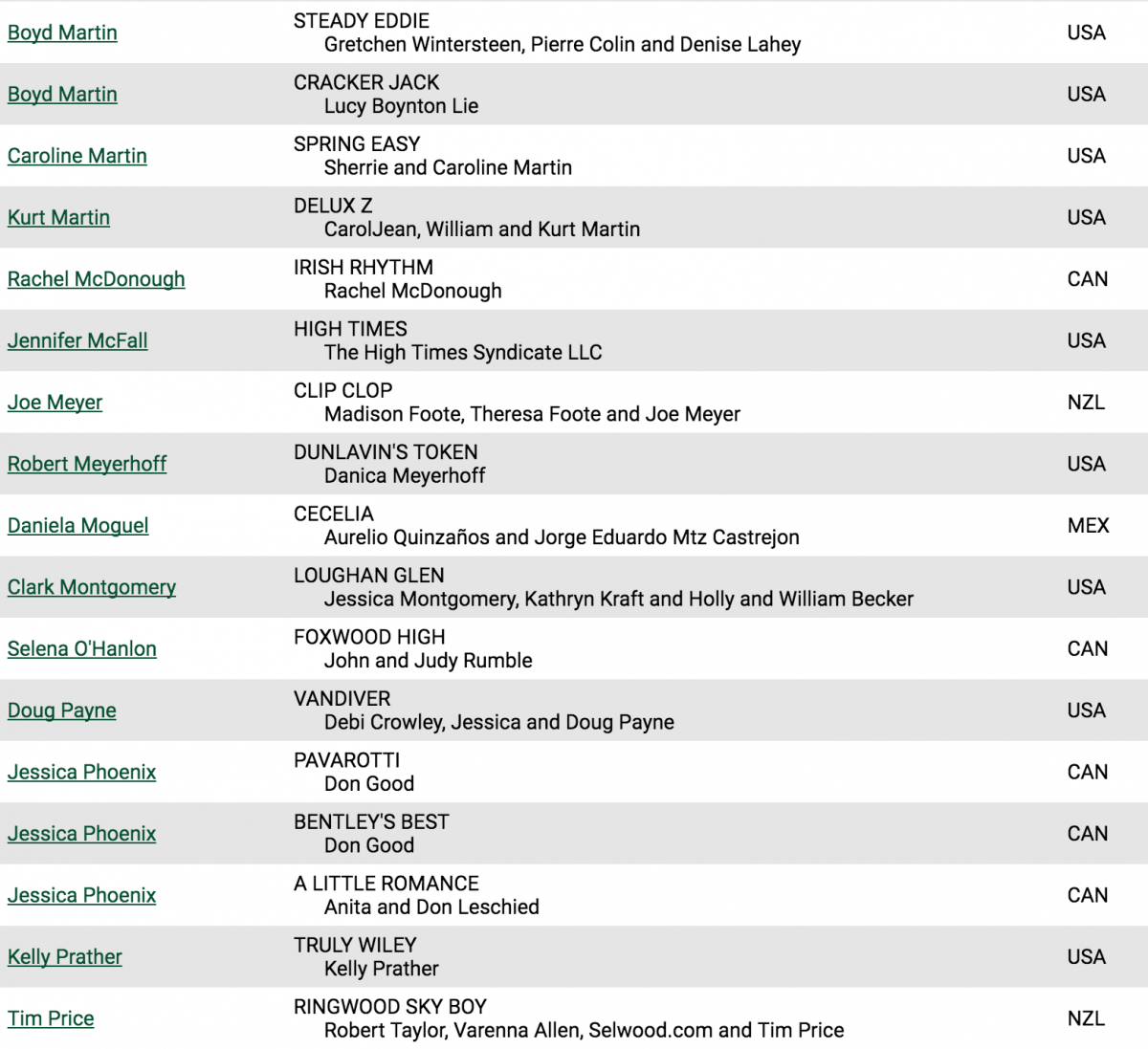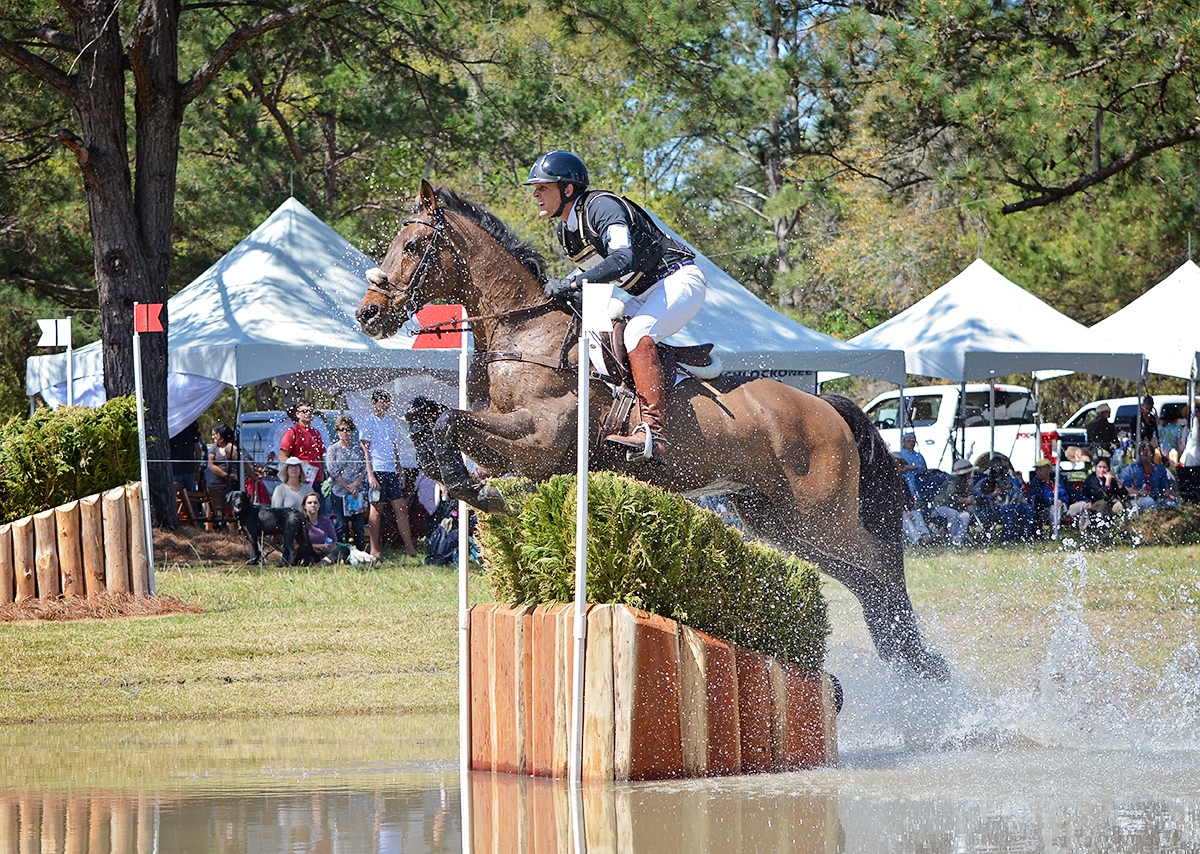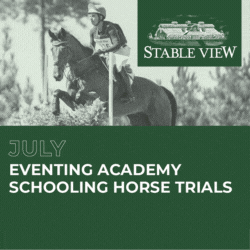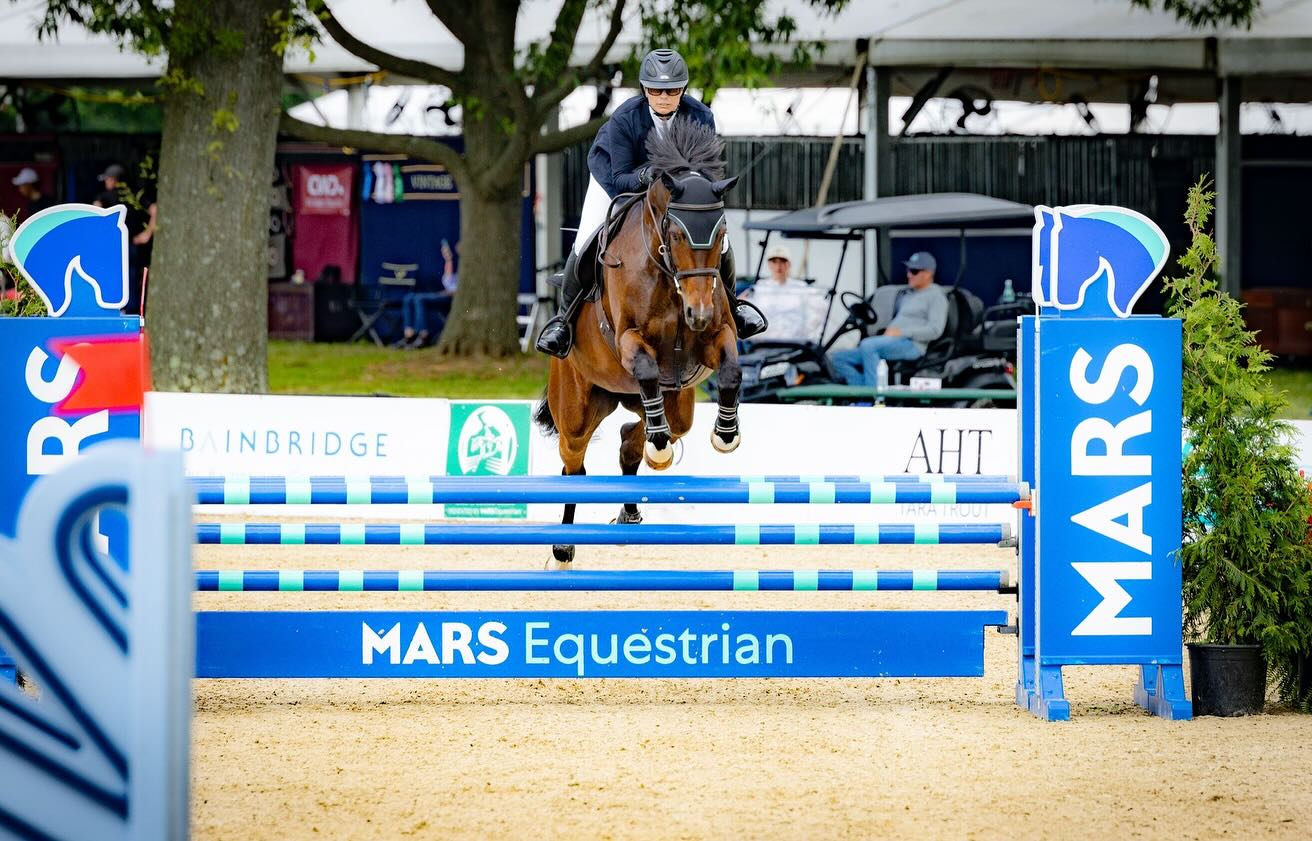 Mud! The bane of farriers everywhere. Photo by Holly Covey.
Mud! The bane of farriers everywhere. Photo by Holly Covey.
What is the single most important thing to just about everyone on cross country day at the Rolex Kentucky Three-Day Event? Oh yes, it is footing. How the beautiful Kentucky bluegrass is going to hold up for the greatest day in eventing on that last Saturday in April means everything. Everything!
Back in the day, Mother Nature had a lot more to say about footing than today. Today we have synthetic and manufactured footing that has changed much of what we expect for good footing in arena horse sports. That’s a good thing. Manufactured footing has changed the game, and made it better for a lot of jumping horses.
The one exception in horse sport is — you guessed it — eventing, where we have one phase left that remains pretty much subject to nature: cross-country. Because our sport allows us to experience uphill, downhill, water, ditches, banks and more natural terrain (or at least, it’s supposed to), our horses encounter footing that is not as consistent as a beautiful raked arena.
That’s the reason we love it — and hate it, too. How many of us have come off cross country missing a shoe, or two, or noticing with dismay a heel grab or worse? Do we blame the footing? I’m remembering a very wise old trainer saying to me, “The footing can’t talk back,” meaning if you blame it, you don’t have to blame the trainer, the jockey or the track management.
March is a really good time to refresh ourselves on footing, and how to evaluate it when we encounter different conditions. While many in the sport have the delightful experience of Carolina loam and sand most of the winter, some of us have things a bit more challenging. (I’m looking out the window at mixed snow and rain as I write.)
The reason there are different terms for footing other than “perfect” or “good” is this: Horses CAN go in less than perfect footing. Yes, they can perform beautifully for not only the best in the sport but for those of us quite a few rungs lower on the ladder. Footing that is not extremely muddy, damp, wet, sticky — all of that — is perfectly OK to run on, provided you have some experience and your horse does, too, and both are properly prepared.
Extremes in weather do produce conditions that are horrible and unsporting, and in such cases the most experienced heads at the event get together and agonize over the decision to either cancel or modify cross country. These decisions, like the one recently at Carolina Horse Park to abandon the Sunday cross country phases of the Southern Pines Horse Trials, March 10-11, due to a nasty early morning snowfall, are never ever made lightly. In Carolina’s case, the snow was packing and balling in horses’ feet in warmup, and one competitor told me they couldn’t even canter on level ground to a warmup fence without sliding. There are many factors in officials giving things a call, but it’s usually going to be an extreme event — like Carolina’s — before the decision is made.
Rain in many areas of the country can lead to conditions that are less than perfect but rain shouldn’t be stopping a horse or a rider in eventing from learning how to go when the ground isn’t absolutely perfect. The point is, you can’t gain experience on less than perfect footing if you don’t practice on it a little bit now and again. With the experience you will gain, you’ll know whether your horse gets that he has to go a little differently, or whether he won’t. And if you pay attention, you can adjust your riding accordingly.
There is nothing on earth as great as the feeling of getting that cross country course licked, and when you do it in less than perfect conditions the accomplishment is magnified even more. So take the time to educate yourself a little on footing.

The established turf of Fair Hill has not been plowed in many decades. Photo by Holly Covey.
Let’s go over some turf footing terms.
Most of these have to do with water — how much of it actually lays on the surface of the ground, how much gets absorbed, and how it is absorbed in the layers just under the surface of a horse’s hoof. You don’t have to be a soil scientist to understand that water and dirt make mud; and grass soaks up the water and prevents mud from happening until it can’t soak up any more water or until the horse’s hooves cut it up and compromise the grass’ root system, which acts as a sponge.
Here’s a visual: Think of a grassy field as a giant sponge. You can do this at your own kitchen sink — with just an ordinary dish sponge. Start with it totally dry, and then add water gradually, finally soak it til it’s sloppy wet – and you’ll get an idea of the following turf footing conditions:
Hard track: Condition of a turf course where there is no resiliency to the surface.
Firm track: Firm, resilient surface, a condition of a turf course corresponding to fast track on a dirt track.
Yielding: Condition of a turf course with a great deal of moisture. Horses sink into it noticeably.
Soft track: Condition of a turf course with a large amount of moisture. Horses sink very deeply into it.
Heavy track: Wettest possible condition of a turf course.
The conditions may also be called “deep” if there has been a heavy rain wherein the grass is very soaked and the surface is quite sloppy. This is similar to “muddy,” but with a bit more water. “Muddy” is a very heavy condition, thick and holding. Then there’s “yielding,” wherein the upper surface will show a footprint as the horse gallops over. But the problem with a yielding surface is that is won’t maintain for a whole bunch of horses working over it, and will get to muddy or deep rather quickly.
This is the reason many large farms with well groomed pastures don’t really want a whole fields of foxhunters galloping over their land, and at least in the hunt country of Chester County, one will drive past signs on the coops that say, “Staff Only.” The landowners want to limit the damage to grass turf to just one or two horses galloping across rather than dozens.
Turf, or grass, is only as good as its root system. The grass you grow on your lawn is not the same sort of grass that is holding the soil out on the cross country fields. There are many roads to Rome when it comes to grass, and that’s not the purpose of this article, but suffice it to say that grasslands and pastures make up the bulk of the footing on most of the cross country courses recognized by the USEA in this country. So knowing a little bit about grass, dirt, and its most important factor of change — its ability to hold or shed water — should help you as an eventer.
There is no question that the type of grass, the root system of the grass, and the many layers of soil structure deeply influence the kind of ground that a cross country track can be built on and run over. Places like Plantation Field in Chester County, PA, and Fair Hill Natural Resource Management Area in Cecil County, MD, are event facilities built over grasslands that have not been plowed for in some cases a century or more.
This creates an incredible “mattress” of footing, of a mature, established grassy root system untouched for many decades. The beauty of this undisturbed subsurface is its immense capacity to absorb and repel rainwater; often heavy rain for hours barely makes a difference in the surface. But if this ground is very dry, the clay in it makes the surface hard, concrete-like, and the rain will run off rather than cut the ground and wash away roots. The mattress also keeps rocks down in the layers and from being pulled up to the surface where a galloping horse may contact them. (These famous soils led to the birth of our nation and in part were some of the reasons England fought so hard to try and keep America a territory, by the way.)
Another type of soil that creates great tracks are the sandy grasslands, found in places like North and South Carolina, and in the beautiful loam and scenic hills of California, among other wonderful eventing facilities. Depending upon their plasticity (ability to soak up and hold) water, these courses can be maintained for jumping for many years. These places with great soils get to have several events a year because the footing can take the traffic, and repair itself, from horses, vehicles, and people. Never underestimate the value of six good inches of topsoil!
So we know that these grasslands are good footing. And we’ve covered why they aren’t plowed up or turned over to disturb the topsoil — because that’s a short term solution for an immediate problem but will do more damage than good over the long run. So how do managers “do something” about the footing on these tracks?
The answer to that question varies because each event is different and subject to different moisture levels, but aeration (putting holes in the ground to open it to moisture reception) is one way managers try to soften hard turf. Jimmy Wofford has described aerated tracks, like those at the Rolex Kentucky Three-day event course, like galloping on an egg crate — to a horse. He cautions that a human can’t feel what the horse feels as it travels on aerated ground.

Photo by Boyd Martin of the aerated footing at Pine Top’s March horse trials.
Aerating is like a mini-massage for topsoil. The aggravator-type soil conditioner is pulled by a large tractor with hydraulic connectors. Basically, there are several models, but how it works is round bars, with pokers on them, are dragged over the surface. The bars and pokers are wiggled as they are rolling, pushing holes into the surface rather than digging it or cutting it like plows and discs. Rather than cutting the roots of grass, it sort of pushes them around.
When moisture happens, it rolls into the holes and is slowly released, much like a water bucket with a pinhole in the bottom. But it is millions of tiny buckets, and in this way the managers get as much out of any rain as possible. If they don’t get any moisture, the “aeration” of the ground serves like an egg crate to cushion the hooves. There are some variations, depending upon machines, to this concept of working the ground on the galloping tracks, but basically it’s the same sort of goal — to make the footing softer, more absorbent, less hard, or concussive.
If you really want to manage footing on cross country to make it perfect, irrigation and underground drainage are the ultimate in control. Only a few places on earth can afford to kick Mother Nature to the curb like this, and what a joy it is to gallop over such tracks — eventers universally praise them, but they’re not really doable for most competitions in North America.
So back to what we normally encounter every day. When we ride today in our rings and fields, we encounter a lot of different conditions. Our horses can discern these conditions very well — after all, it’s their hooves! Most of our horses know when it’s slippery, wet, muddy or deep and change the speed and energy in which they step very markedly, regardless of whether the rider tells them what to do! In some ways that’s a great thing, but sometimes, especially young horses, can make mistakes.
If we continuously ride only on groomed surfaces (and in my case, on level ground) when I do go to a place with different footing or hills, my horses often need to adjust a little. Having some foxhunting experience really helps a horse understand footing changes and how to cope, because within a two to three hour hunt you can encounter everything from hard pan to deep mud. If we school only on great stuff, our horses learn to go a certain way. If we school over different conditions, we can teach them to cope with footing and that’s a good thing for our safety.













































